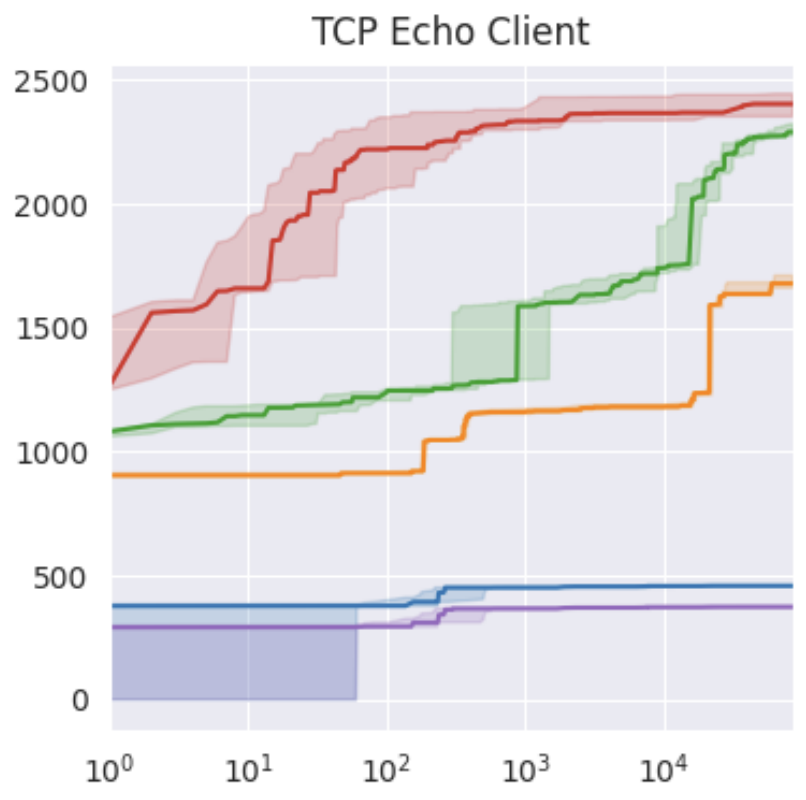Same-Architecture Firmware Rehosting and Fuzzing
We propose near-native rehosting: running embedded firmware as a Linux userspace
process on a high-performance system that shares the instruction set family with the targeted device.
SAFIREFUZZ is a throughput-optimized rehosting and fuzzing framework for ARM Cortex-M firmware.
It takes monolithic binary-only firmware images and uses high-level emulation (HLE) and dynamic binary
rewriting to run them on far more powerful hardware with low overhead.
This repository holds the code for the USENIX `23 publication "Forming Faster Firmware Fuzzers".
Important: a CPU supporting ARMv7-M is required, e.g., Cortex-A72s found in Raspberry Pi 4s.
Although the Cortex CPUs in Raspberry Pis support the aarch32 architecture with the A32 instruction set, most OSs will assume aarch64 as a default.
In order to execute 32-bit applications, it is necessary to have all libraries installed for the 32-bit instruction set (armhf) besides the usual and cross-compilation libs (cf. https://wiki.debian.org/Multiarch/HOWTO).
Under Debian this can be achieved with:
sudo dpkg --add-architecture armhf
sudo apt update
sudo apt install libc6:armhf libstdc++6:armhf
If these steps fail, this suggests that your OS might not be compiled with the required COMPAT kernel flag.
We recommend the Raspberry Pi OS as the maintainers are specifically considering this usecase: https://forums.raspberrypi.com/viewtopic.php?t=331968
-
Install the cargo cross compilation toolchain for
armv7-unknown-linux-gnueabihfas well asgcc-arm-unknown-linux-gnueabihfandg++-arm-unknown-linux-gnueabihf.
Add the following to your cargo config in~/.cargo/config:[target.armv7-unknown-linux-gnueabihf] linker = "arm-linux-gnueabihf-gcc" -
Checkout the submodules at the correct commit:
git submodule update --init --recursive
-
Import the harness you want to execute at the top of
engine.rs:use crate::harness::wycinwyc as harness;
Whenever you change the target and/or harness, you need to re-compile the binary.
-
Build with
cargo build --release --target armv7-unknown-linux-gnueabihf
The
rust-toolchainfile automatically sets the correct compiler version. -
Configure your system before the first execution: The
prepare_sys.shscript disables ASLR and allows mapping of virtual memory down to address 0.
- A single file or all files in a directory can be executed N (e.g., 1000) times with
./safirefuzz -b firmware/atmel_6lowpan_udp_rx.bin -i inputs/atmel_6lowpan_udp_rx/input/input1 -n 1000 - To start fuzzing a harness with LibAFL, simply specify
-f:./safirefuzz -b firmware/wycinwyc.bin -i inputs/wycinwyc -f
Firmware binaries and fuzzing seeds used during our evaluation are available at https://github.com/pr0me/safirefuzz-experiments.
A basic harness skeleton is provided in src/harness/skeleton.rs.
The engine expects any harness to implement the following interfaces:
pub static mut EMU_SP: u32;
pub static mut ENTRY: u32;
pub fn set_hooks();
pub fn reset();
pub fn setup(code: &[u8], offset: u32) -> Result<(), String>;We provide example harnesses for multiple real-world targets.
We fuzz 12 targets in 24-hour campaigns and achieve an average throughput increase of more than 600x and 30% more coverage when compared to HALucinator, a state-of-the-art firmware fuzzing approach using high-level emulation and Unicorn.
The plot shows the median and 95% confidence intervals over five 24-hour runs for the TCP Echo Client target.
Coverage is reported in number of reached basic blocks and time is on a log scale.
SAFIREFUZZ (red) achieves better coverage in a fraction of the time when compared to HALucinator (orange), HALucinator when replacing the backend with LibAFL (green), FuzzWare (blue) and FuzzWare not counting basic blocks inside the Hardware-Abstraction-Layer (purple).
On this target, we achieve 3400 executions per second, compared to 4.8 for HALucinator and 87.2 for FuzzWare.
A thorough performance evaluation can be found in our paper.
Experiment data is available at https://github.com/pr0me/safirefuzz-experiments.
@inproceedings{2023_safirefuzz,
title={Forming Faster Firmware Fuzzers},
author={Seidel, Lukas and Maier, Dominik and Muench, Marius},
booktitle={USENIX Security},
url = {https://www.usenix.org/conference/usenixsecurity23/presentation/seidel},
year={2023}
}
